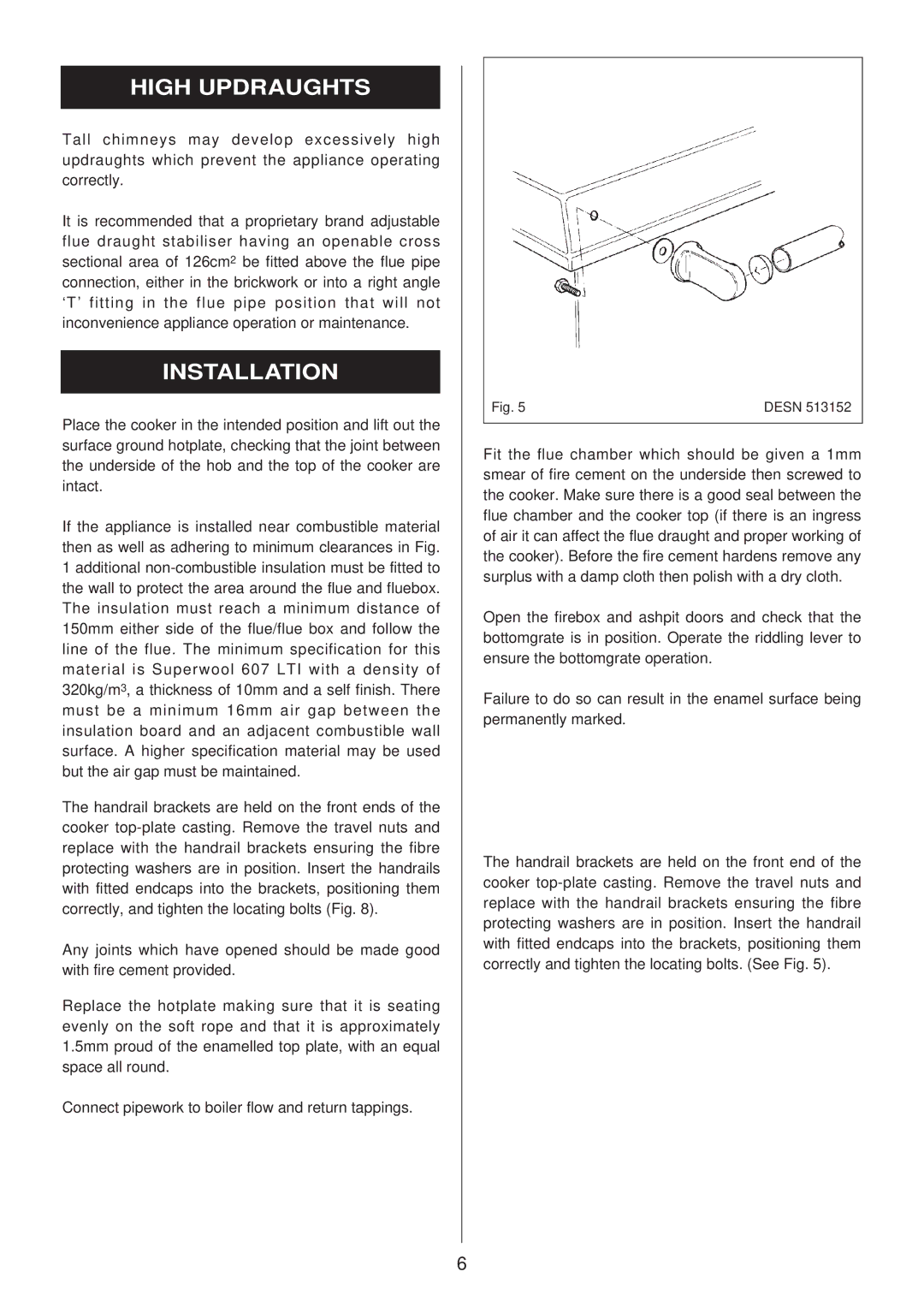200SFW, 212SFW specifications
The Rayburn 212SFW and 200SFW are two exceptional models in the lineup of Rayburn stoves, renowned for their advanced features, technological innovations, and outstanding performance. Designed for efficiency and reliability, these stoves have become popular among homeowners who seek both functionality and style in their heating solutions.One of the key features of the Rayburn 212SFW and 200SFW is their marked energy efficiency. Both models are designed to deliver maximum heat output while consuming minimal fuel, incorporating a well-insulated construction that retains heat effectively. This translates into reduced energy bills and a commitment to sustainability, making them ideal choices for environmentally conscious users.
The Rayburn 212SFW model stands out with its 12 kW output, while the 200SFW delivers a slightly lower but still impressive 10 kW. These outputs cater to various heating requirements, whether for cozy living spaces or larger areas needing consistent warmth. The ability to heat water is another significant advantage, with both models featuring a built-in back boiler option that can support central heating systems, which is especially beneficial during cold months.
Another notable characteristic of both models is their versatility. Users can choose between different fuel types, including wood, oil, or gas, allowing for tailored heating solutions that align with personal preferences and accessibility. The designers have also integrated a sophisticated flue system, which ensures efficient combustion and minimizes emissions, enhancing their safety and environmental friendliness.
Moreover, the Rayburn 212SFW and 200SFW are equipped with advanced control features that simplify operation and monitoring. The intuitive thermostatic controls make it easy to set and maintain desired temperatures, while the quality materials and craftsmanship guarantee durability and longevity.
In terms of aesthetics, Rayburn stoves are designed to complement various interior styles. With a classic yet contemporary appearance, these models feature a choice of finishes and colors that can enhance any kitchen or living area. The combination of style, performance, and ecological responsibility makes the Rayburn 212SFW and 200SFW standout choices for those in the market for high-quality stoves.
In summary, the Rayburn 212SFW and 200SFW are remarkable for their exceptional energy efficiency, versatile fuel options, and user-friendly features. Whether for heating large spaces or providing hot water, these models reflect the highest standards of modern stove technology, making them a valuable addition to any home.

